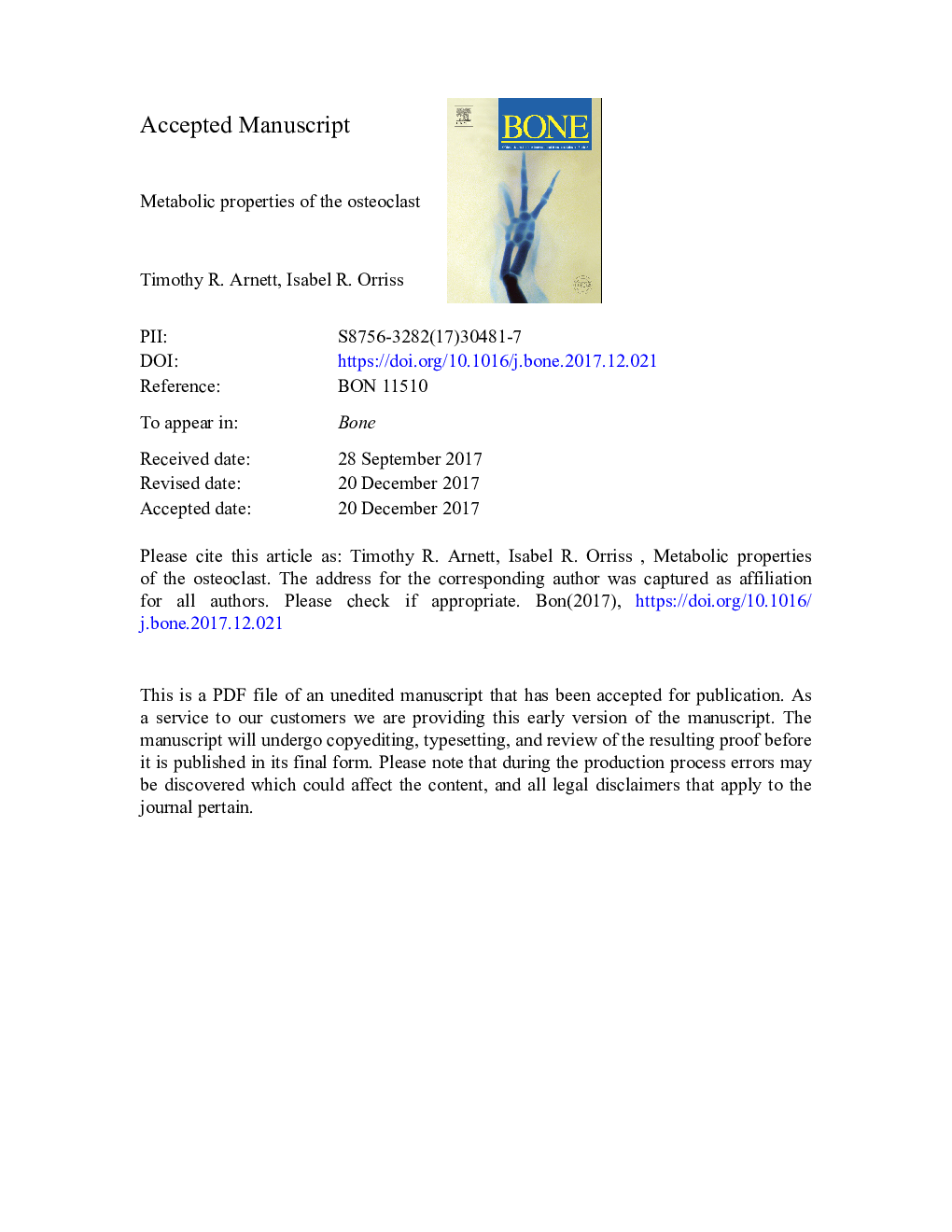| کد مقاله | کد نشریه | سال انتشار | مقاله انگلیسی | نسخه تمام متن |
|---|---|---|---|---|
| 8950912 | 1645796 | 2018 | 21 صفحه PDF | دانلود رایگان |
عنوان انگلیسی مقاله ISI
Metabolic properties of the osteoclast
ترجمه فارسی عنوان
خواص متابولیک استئوکلاست
دانلود مقاله + سفارش ترجمه
دانلود مقاله ISI انگلیسی
رایگان برای ایرانیان
کلمات کلیدی
موضوعات مرتبط
علوم زیستی و بیوفناوری
بیوشیمی، ژنتیک و زیست شناسی مولکولی
زیست شناسی تکاملی
چکیده انگلیسی
Osteoclasts are defined as cells capable of excavating 3-dimensional resorption pits in bone and other mineralised tissues. They are derived from the differentiation/fusion of promonocytic precursors, and are usually large, multinucleated cells. In common with other cells from this myeloid lineage such as macrophages and dendritic cells, they are adapted to function in hypoxic, acidic environments. The process of bone resorption is rapid and is presumably highly energy-intensive, since osteoclasts must actively extrude protons to dissolve hydroxyapatite mineral, whilst secreting cathepsin K to degrade collagen, as well as maintaining a high degree of motility. Osteoclasts are well known to contain abundant mitochondria but they are also able to rely on glycolytic (anaerobic) metabolism to generate the ATP needed to power their activity. Their primary extracellular energy source appears to be glucose. Excessive accumulation of mitochondrial reactive oxygen species in osteoclasts during extended periods of high activity in oxygen-poor environments may promote apoptosis and help to limit bone resorption - a trajectory that could be termed “live fast, die young”. In general, however, the metabolism of osteoclasts remains a poorly-investigated area, not least because of the technical challenges of studying actively resorbing cells in appropriate conditions.
ناشر
Database: Elsevier - ScienceDirect (ساینس دایرکت)
Journal: Bone - Volume 115, October 2018, Pages 25-30
Journal: Bone - Volume 115, October 2018, Pages 25-30
نویسندگان
Timothy R. Arnett, Isabel R. Orriss,
